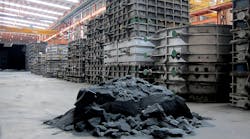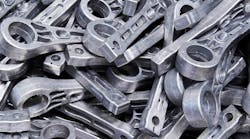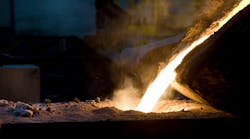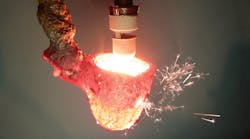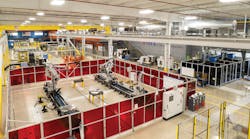Pittsburgh-based Allegheny Technologies Inc. is idling a titanium sponge production operation indefinitely, and scaling back some titanium hot working operations, in a strategy to improve operating efficiency, increase operating income, and reduce capital obligations. “We are focused and committed to return ATI to sustainable profitable growth and improve cash flow,” stated chairman, president and CEO Rich Harshman, ATI’s Chairman, President and Chief Executive Officer. “Using a disciplined process, we continually review all of our operations and facilities from both a strategic and cost competitiveness viewpoint.”
Harshman predicted the cuts in ATI’s titanium organization would improve earnings from operations by approximately $50 million, beginning in 2017.
The titanium sponge plant in Rowley, UT, will be idled indefinitely, and ATI will source its future needs for those materials from merchant suppliers worldwide. Titanium sponge is a refined and condensed by-product of titanium ore, and is essential to producing titanium alloys for mill products, castings, or forgings. ATI noted that the global supply of titanium sponge has expanded significantly in recent years, while demand for industrial-grade titanium products is weak. As a result, it added, titanium sponge can now be bought from qualified producers under long-term supply agreements at prices lower than its own production costs at Rowley.
The changes also include scaling back “certain higher cost titanium hot-working operations in Albany, OR.” The manufacturer did not detail which operations would be targeted. The Albany plant produces several high-tech alloys in addition to titanium, and finished products include forgings, castings, and various rolled and pipe/tubular products. The Oregon complex also includes a dedicated Aerospace Machine Shop.
The idling and consolidation will incur total pre-tax charges of $504 million, but ATI noted the changes would generate approximately $50 million in cash flow from reduced working capital as the titanium sponge inventory is reduced over the next several quarters.
Harshman emphasized that ATI’s asset review and adjustments take into account “current and expected future market conditions, including forecasted growth in demand for our products from all end markets and assessments of global supply and demand dynamics.”


